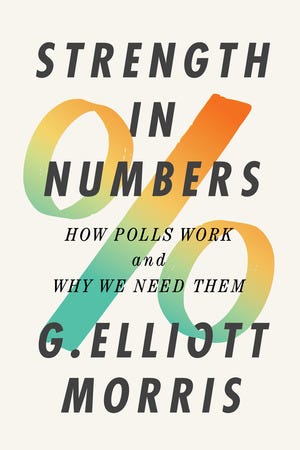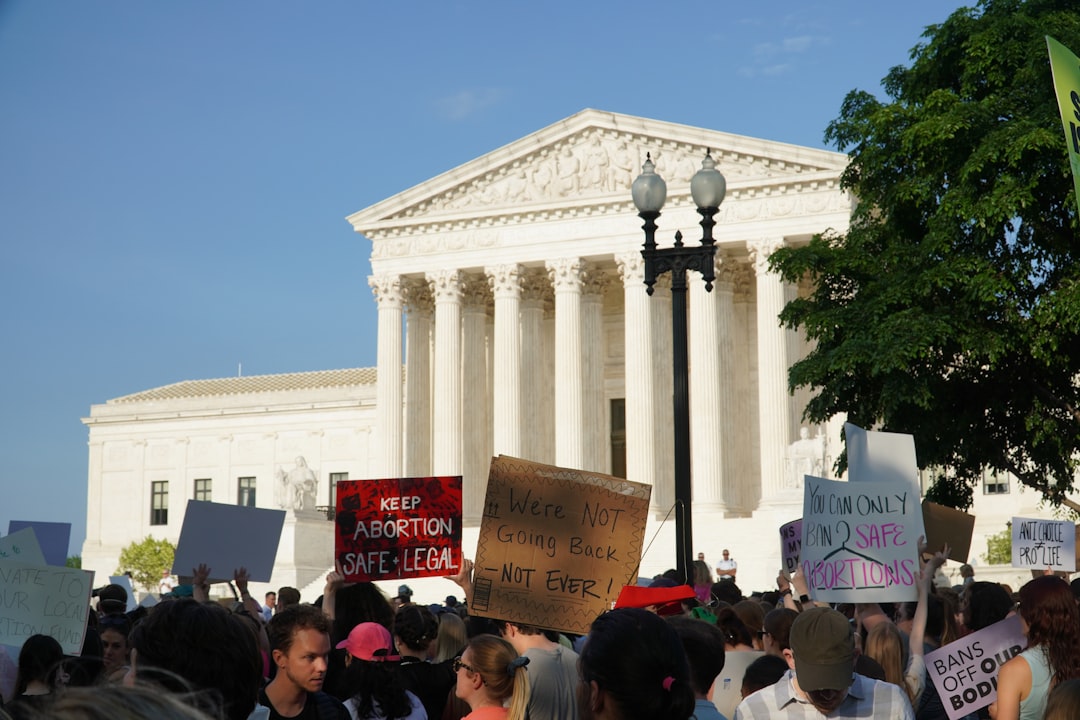The Supreme Court's Dobbs decision may have given the Democrats a boost for the midterms | #201– July 10, 2022
Polls of the US House race have moved 1-2 points toward the Democrats over the last month. But surveys are noisy, and Democrats may be more responsive than average to pollsters right now.
Before we get going: a reminder…
It’s launch week for STRENGTH IN NUMBERS!
Here is your final reminder that my new book on polls and democracy comes out on Tuesday! It is packed with entertaining stories about such characters as the first pollsters and election forecasters, the politicians and philosophers who devised the first theories of how public opinion should shape our government, and the people and organizations who developed modern polling — and their solutions to the newer problems that are threatening the very existence of the industry, and with it, a crucial tool for democracy.
The book also discusses how polls and election models work under the hood, making it an informative read ahead of this year’s midterm elections.

Read more about the book, including some great blurbs, and pre-order it here. And if you’re in the Washington, DC area, come see me and Jamelle Bouie talk about the book at Politics and Prose on Connecticut Ave on Tuesday, July 12th, at 7:00 PM. It will likely be your only chance to get a signed copy of the book!

What polls say about the impact of the Dobbs decision on the midterms
In striking down Roe v Wade last month, the Supreme Court took the side of a small minority of voters who don’t want any federal protections for abortion. According to five high-quality polls taken since the decision, an average of 60% of US adults explicitly disapprove of the decision. Even more — closer to 85-90% — say that abortion in the US should be legal in some, most, or all circumstances. While states are free to establish such policies, the Court has remade the law nationwide to be a total lack of protections, supported by just 10-15% of Americans in these polls.
Surely such a monumental and unpopular decision would have political effects, right? Traditional “spatial” theories of voter behavior suggest that people pick the party which holds the positions closest to their own. If Republicans are, by and large, endorsing the Supreme Court’s decision and praising the end of Roe, shouldn’t Democrats get a boost in the polls?
Well, while the polling is clear that most voters disapprove of the Dobbs decision, it is less clear that Democrats have benefited from the dramatic upending of the status quo. Some polls have shown an increase in the share of respondents who say they are going to vote for Democrats in House races this November — something we call “generic ballot” polls. But it is not clear (a) whether this movement is real or (b) if it will last.
Let’s start with the data.
The following pollsters conducted generic ballot polls before and after the Dobbs decision. Here are their numbers:
NPR/PBS NewsHour/Marist: 47% D - 44% R → 48% D - 41% R (+2 swing D)
Monmouth University: 44% D - 48% R → 46% D - 48% R (+2 swing D)
Yahoo News/YouGov: 42% D - 38% R → 45% D - 38% R (+3 swing D)
The Economist/YouGov: 42% D - 39% R → 43% D - 40% R (+0 swing D)
Harvard/Harris Poll: 49% D - 51% R → 50% D - 50% R (+2 swing D)
Other surveys — including from Emerson College and POLITICO/Morning Consult — have also shown swings in the 2-3 point range.
Comparing any one of these new polls to their older vintage thus gives the impression that the race has changed. And given a set of 5+ data points, we can be reasonably sure that sampling error is not skewing the average or median change too much. That is the theory behind aggregating surveys in the first place.
However, it is not as simple as averaging the points together and calling it a day. There is a strong chance that all polls, regardless of their mode, are being swayed by changing patterns of something called partisan nonresponse bias. That’s when one party is likelier to respond to polls than another, all other demographic traits being held equal. But rates of responding are not fixed over time. For instance, pollsters have found that news coverage that is particularly bad for one party can cause its members to suppress their response rates to polls. Here is an example, taken from YouGov’s polling of the 2012 election:
Changes in partisan nonresponse will lead to changes in the partisan composition of a poll — the share of a poll’s respondents that classify themselves as Democrats or Republicans — too. And that, in turn, changes their topline findings. Such changes are called “phantom swings”: changes in public opinion that result from differences in response rates that disappear once the typical pattern of nonresponse returns to normal.
All this means is that what looks like a change in support for Democrats post-Dobbs may actually result from a change in Democrats’ willingness to respond to surveys. And it looks like that is likely the case; other polls show Democrats have been particularly angered by the ruling and say they are more likely to vote now.
This could explain why the YouGov surveys above, which hold the partisan composition of its poll constant across weeks, show only modest movement on average in the horse race while the other surveys suggest a bounce for the Democrats. And it could explain why other online party-weighted panel surveys, such as Civiqs’ show no movement in favorability ratings for the Republican Party while other polls show huge hits among political Independents.
That being said, without actually analyzing the rates at which partisans are refusing phone calls and then making corresponding adjustments to the survey — which a pollster can do, for example, if they call people off the voter file or select them from an online panel (things I talk about in my book!) — it is impossible to know if nonresponse is responsible for the swing. I do think that it is very plausible that a dramatically unpopular Supreme Court ruling has energized supporters of the party defending abortion rights.
And I should note that another poll question that asks voters whether they prefer Democrats or Republicans control the House/Senate — as opposed to who they are going to vote for — has shown a small shift toward Democrats, too. But the swing is also within the surveys’ margins of error, so we cannot conclude it is statistically significant.
In summary, we should wait for more data to issue any conclusions. Additional high-quality polls will come out in the next week or so, now that pollsters have had time to field new surveys after coming back from the long July 4th weekend. If changes in the generic ballot topline stick around for a few weeks, we can conclude that the Dobbs decision made an impact.
One other piece of advice: watch the polls of Senate and Governor races in states that are likely to have large imbalances between abortion policy and public opinion very soon. Any backlash to Republican politicians, many of which have been very vocal supports of the Court’s decision, is likely to show up in these surveys, too.
Talk to you next week,
Elliott
Posts for subscribers
If you enjoyed this post please share it — and consider a paid subscription to read additional posts on politics, public opinion, polling and election statistics, and democracy.
Monthly mailbag/Q&A!
The next blog Q&A will go out on the first Tuesday of August, or if someone asks a real banger of a question — whichever comes first. Go to this form to send in a question or comment. You can read past editions here.
Feedback
That’s it for this week. Thanks very much for reading. If you have any feedback, you can reach me at this address (or just respond directly to this email if you’re reading in your inbox). And if you’ve read this far please consider a paid subscription to support the blog.




